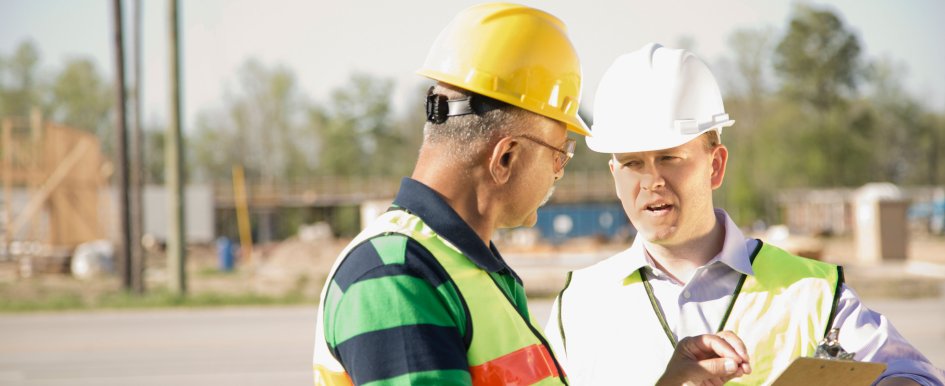
Managing people does not come naturally to most construction business owners. Often, project managers, estimators, general superintendents, superintendents, foremen and engineers are not born managers either. Entrepreneurs who start or own companies are typically effective, visionary leaders who understand the big picture and are focused on achieving their dreams. They are problem-solvers, people pleasers, customer friendly and risk takers. They are also driven by a need to create, build and grow. A business owner should hold regular project management review meetings with the project manager (PM) and superintendent to review the project job-cost budget update, executed subcontract log, schedule, paperwork, documentation, change-order logs, payment applications, shop drawing submittals and correspondence to verify the entire team is doing its job.
A Typical Entrepreneur
An entrepreneur is defined as “a person who creates, organizes, develops and assumes business risk in expectation of making a profit.” Another version reads, “someone who seeks to solve an existing problem in exchange for compensation to achieve his/her dreams.” An entrepreneur is in constant motion; moving forward, building for the future, being a risk taker, organizing a business. Business owners don’t always make great managers naturally.
What Makes a Strong Managing Manager
The “managing manager” (MM) is someone who manages a group of people, division or department. In the construction business, this position can include the business owner, president, vice president, general operations manager, chief estimator, general superintendent, financial manager or sales manager. The definition of a managing manager is as follows: a person who is responsible for supervising, administering, controlling and directing a department, team or staff of people to achieve expected results. This person is accountable for coordinating, guiding, motivating and supporting a team responsible for an organization’s operations.”
The MM is usually structured, systemized, detailed, tidy, sees and doesn’t avoid problems, doesn’t make excuses, doesn’t tolerate poor performers, meets deadlines, has a firm calendar and achieves results. Are you a managing manager? The following is a list of typical roles and responsibilities of a MM.
1. Achieve Results
- Take responsibility for operations, people and projects
- Ensure there are enough trained people to handle the workload
- Recruit, hire and train to meet overall goals and eliminate poor performers
- Make sure everyone does things the same way per company standards and systems
- Hold people accountable and maintain a team with a positive attitude
2. Planning & Organizing
- Develop strategy and budgets to allocate financial and human resources to grow revenues, achieve profits and hit overall company goals
- Determine how teams should be structured to ensure the best results
- Meet, collaborate and work with other company peer managers to organize, review and make strategic decisions to meet company goals
3. Enforcement
- Make sure employees are achieving their goals, following company standards and systems, doing their jobs efficiently and timely and being accountable and responsible to perform their job descriptions
- Review employee work product, activities, requirements and scorecard data to ensure on-time and on-budget quality workmanship and performance
- Hold regular meetings with direct reports to review their achievements, duties, progress, status, deadlines, work product and results
4. Coaching
- Train, mentor, support and provide
- Help employees achieve their highest level of performance and growth
- Provide direction on efficient, timely completion of their responsibilities
- Provide input and direction to help team members make good decisions, solve problems, overcome challenges and handle emergency issues
- Strive to create and promote a healthy, effective working environment, where people feel trusted and motivated to do their best work
- Keep team informed of overall company systems, procedures, changes, strategy, results and issues
The Managing Manager as a Policeman
Let’s take a look at what a good MM’s duties, job description and policing activity should include in any one workday. In the construction business, the president or vice president of construction operations has project managers under him/her.
The MM must ensure the PM does his/her job. In other words, the MM is the policeman, making sure the PM is following the rules and systems required by the company. The MM should hold a bimonthly review meeting with the PM. The following list includes some of the actions or activities that should be completed during the meeting.
- Update project budget and job-cost report, with estimated cost to complete
- Update production labor and equipment scorecard
- Review actual versus budget
- Write all subcontracts, material orders and testing within 2 weeks of contract
- Manage subcontract log
- Make sure all subcontracts are executed within 14 days
- Manage submittal process
- Create list of drawings and submittals
- Ensure all drawings are submittedwithin 14 days of contract and approved within 7 days
- Obtain all bonds, insurance and permits within 10 days of contract
- Manage change order process
- Never do extra work without prior written approval of company officer
- Notify customer for approval prior to starting extra work
- Keep change orders current
- Document all project issues, changes, RFIs, delays and notices within 7 days
- Maintain PCO/CO log
- Prepare and update project schedule monthly, with superintendent and foreman input
- Review field schedule weekly with project superintendent/foreman
- Manage project invoice payment process and submit to customer by month end
- Approve all timecards and job invoices weekly with accurate cost codes
- Manage updated project plans
- Visit jobsites every week
- Make sure all required safety meetings are held and documented for crews and subcontractors
- Manage closeout punch list, warranty work and documentation
